Directed energy weapons for the NGAD fighter: new details and old problems
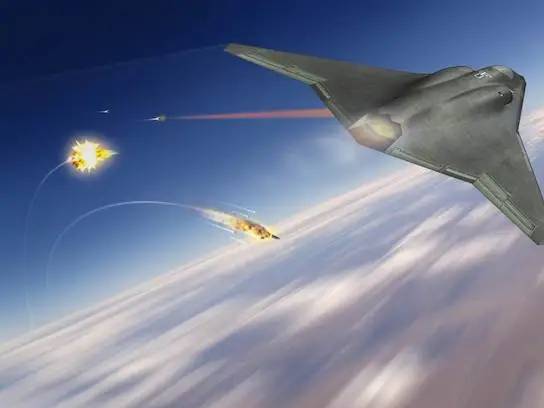
The concept of the NGAD fighter with laser weapons from Northrop Grumman
In the interests of the US Air Force, a promising next-generation fighter Next Generation Air Dominance (NGAD) is being developed. As part of this project, it is planned to implement a number of new ideas and technologies, with the help of which it will be possible to provide superiority over any existing aviation technique. In particular, the possibility of creating and implementing the so-called. weapons on new physical principles or "directed energy" systems.
Future technologies
Over the past few years, the NGAD program has been in the research and preliminary design stages. This year, a full-fledged development of the future fighter has started. For obvious reasons, almost all the details of the project remain classified; even the approximate appearance of the future aircraft is unknown. However, some of its features have already been revealed.
The NGAD was reported to be a stealth supersonic fighter. Its main task will be the struggle for air superiority, but it will be able to perform other tasks, such as intercepting enemy aircraft or attacking ground targets.
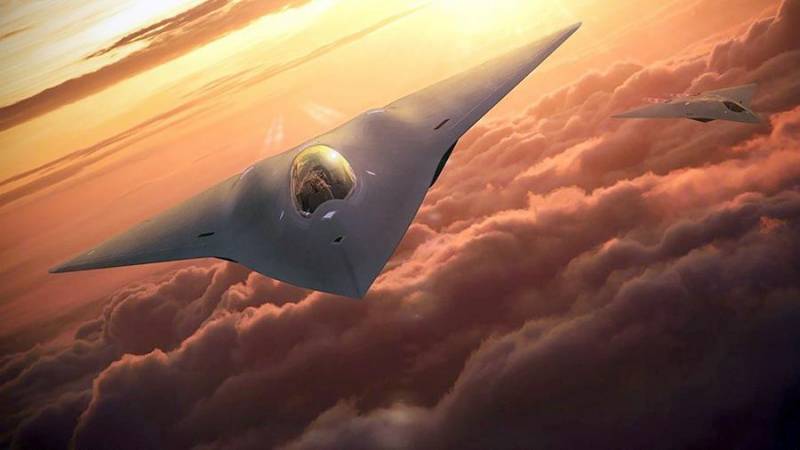
Another version of the appearance of NGAD. Lockheed Martin Graphics
Fundamentally new solutions in the field of avionics and related opportunities are proposed. So, depending on the characteristics of the combat mission, the aircraft will be able to operate under the control of a pilot or in an unmanned mode. In addition, the widest networking opportunities are provided: fighters will interact with each other and with other combat units, incl. with unmanned aerial vehicles.
Armament complex
Some plans of the customer and industry in the context of armaments are disclosed. So, at the first stage, the NGAD fighter will be armed with guided missiles and bombs. The nomenclature of such weapons will be determined in accordance with the content of the arsenals at the time of the appearance of the aircraft. Like modern 5th generation fighters, the promising NGAD will carry such weapons in internal cargo bays.
Several times official reports mentioned the fundamental possibility of using "directed energy" weapons. Combat lasers and "microwave guns" fall into this category. It is not excluded that in the medium or long term, complexes of this kind with limited dimensions and weight, suitable for installation on aircraft, will be created.
So far, combat lasers and "microwave guns" are being developed in the context of aircraft protection. An airborne defense system with such means will make it possible to suppress enemy systems, as well as effectively deal with air-to-air or surface-to-air missiles, regardless of the method of their guidance. In the future, the appearance of similar complexes capable of hitting aircraft and ground equipment is possible.
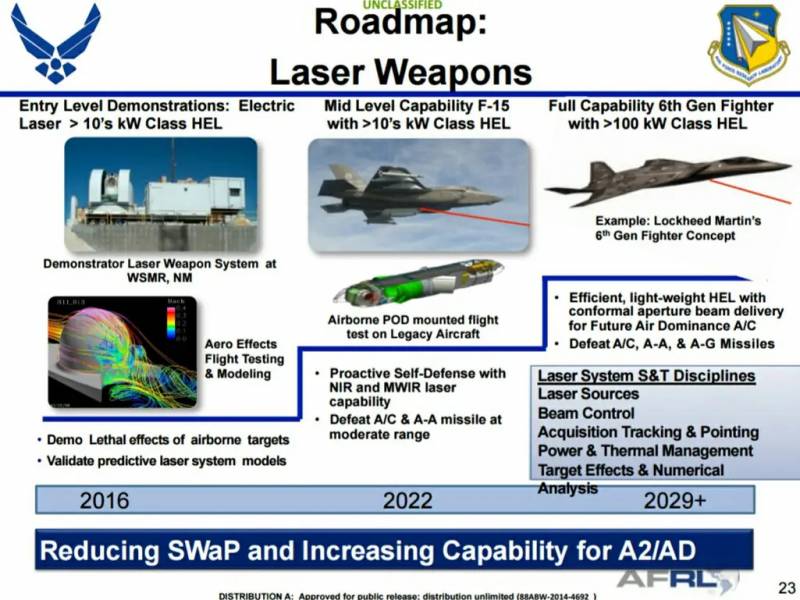
2013 Laser Weapons Plan US Department of Defense Graphics
New Details
Recently, new information was published on the development of "weapons based on new physical principles" for the US Air Force. The Drive / The War Zone, using the Freedom of Information Act, obtained declassified documents about stories Air Combat Air Command (AAC) 2014-16 It turned out that during this period the Command showed great interest in new weapons and even received some results.
It is reported that in 2014-15. AAC's attention has been drawn to the latest developments in directed energy weapons, led by DARPA. The command studied the existing developments and assessed their potential in the context of combat aviation.
According to the open part of the documents, the interest of the Command was attracted by the Self-Protect High Energy Laser Demonstrator (SHiELD) program, which has been developed under the leadership of the DARPA agency since 2013. Its goal is to create a containerized laser air defense system for installation on existing and advanced aircraft.
In 2014-15 AAC and AFRL representatives met to discuss various aspects of the SHiELD program. At the same time, the attention of the Command was drawn to two projects within the framework of the latter. The first of these is classified and is not mentioned in the open version of the document, and the second was High Energy Laser for Future Air Dominance (HEL-FAD). The AAC wanted to know all the details of HEL-FAD, and also requested information about the reasons for its failure.
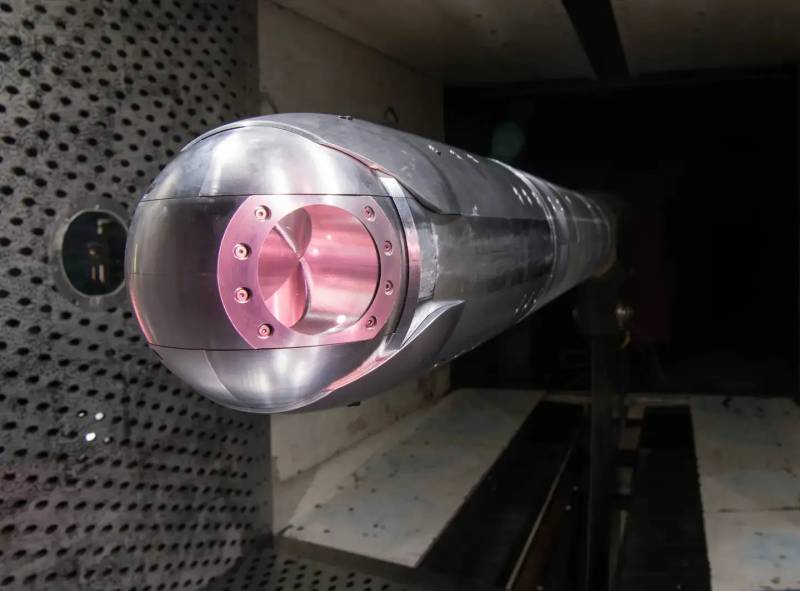
Layout of a suspended container with a combat laser. Photo by the US Department of Defense
It is curious that during the declassified period, the Air Combat Command was interested in existing projects, but did not launch their own. It is quite possible that such a project did start, but it started later, after 2016. By this time, AAC could explore all the available opportunities, draw conclusions and draw up its own terms of reference.
In the context of laser weapons, The Drive / The War Zone also cites a declassified slide from an AFRL presentation from 2013. It indicates that in 2016 the laboratory was going to conduct ground tests of a future aircraft laser technology demonstrator with a power of tens of kilowatts. In 2022, such a system was planned to be transferred to an air platform and tested in flight. After 2029, a new generation laser with a power of more than 100 kW was expected to appear and enter the tests. for 6th generation fighters.
Both aviation laser systems were designated as a means to combat missiles of various types: anti-aircraft, air-to-air or air-to-surface aviation. The fight against more complex targets in 2013 was not mentioned.
With a vision for the future
The US Air Force's interest in "directed energy weapons" was known before. By their order, several not very successful projects were developed. Now it has become known that the Air Force is seriously studying the possibility of creating combat lasers for tactical aviation. Moreover, there is reason to believe that they did not stop at research and launched a full-fledged project a few years ago.
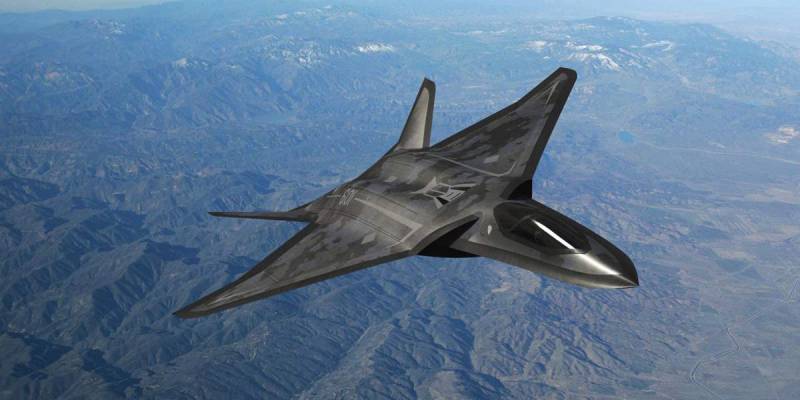
Alternative NGAD from Lockheed Martin
The situation with electromagnetic weapons looks different. Various "microwave guns" have already been tested in the field conditions. Small-sized systems for fighters, as far as is known, have not yet been created and / or have not reached testing. It cannot be ruled out that the projects of aviation "guns" encountered difficulties. Or the Air Force simply does not consider this direction promising and therefore pays more attention to lasers.
According to the work schedule almost a decade ago, by 2022, AFRL and allies had to create a limited-power combat laser suitable for installation on tactical aircraft. Similar successes of the American industry have not yet been reported. There is no even indirect evidence of obtaining such results, or at least approaching them.
It is possible that the Research Laboratory and DARPA programs encountered some difficulties, and the work schedule had to be revised. The hypothetical laser project commissioned by the Combat Command, if it exists, should also be in one of the early stages, and the container with unusual weapons is unlikely to be ready for full-fledged flight tests.
It should also be noted that the projects of combat lasers for the Air Force are still distinguished by a certain modesty. We are talking only about the fight against missiles of different types. With the help of a laser of sufficient power, it is proposed to suppress or “burn out” infrared homing heads or damage the missile structure. More complex targets, such as aircraft or various ground objects, are still planned to be left to traditional weapons - missiles and bombs.
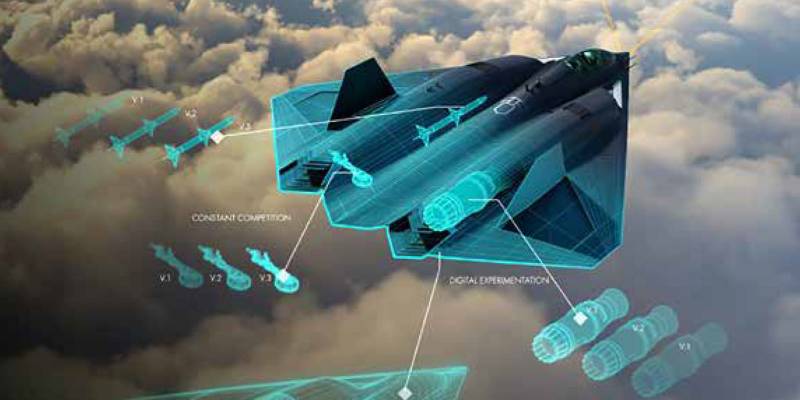
NGAD concept from the US Air Force. Key components are marked. U.S. Department of Defense graphics
Apparently, well-known factors interfere with increasing the power of lasers and expanding the list of targets to be hit. Thus, the use in tactical aviation imposes restrictions on the dimensions and weight, as well as on the power consumption of a combat laser. At the same time, it must have a radiation power of at least tens of kilowatts. Apparently, no one has yet been able to create a laser system with such a ratio of characteristics. Whether anyone will be able to do this in the foreseeable future is unknown.
Uncertain dates
According to statements in recent years, the NGAD fighter will be tested in the second half of the decade. No later than the beginning of the thirties, the troops expect serial equipment of this type. Whether it will be possible to meet these deadlines is unknown. At the same time, it can be expected that in the early stages of operation such a fighter will indeed not receive fundamentally new weapons.
In recent years, the US industry has made some progress in the field of "directed energy" weapons, but systems suitable for the full use of tactical aircraft have not yet been created. In addition, at the moment only defensive systems are being created for it. How soon these projects will be completed is unknown. The creation of full-fledged combat systems for combating aircraft or ground targets is also in question. However, the Pentagon remains optimistic and is going to solve all these problems.
Information